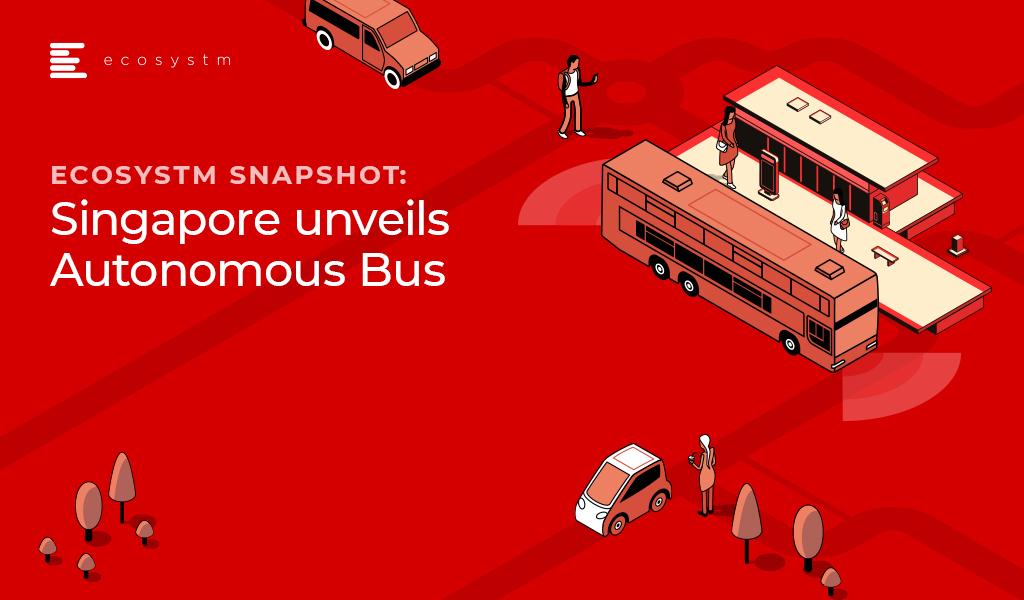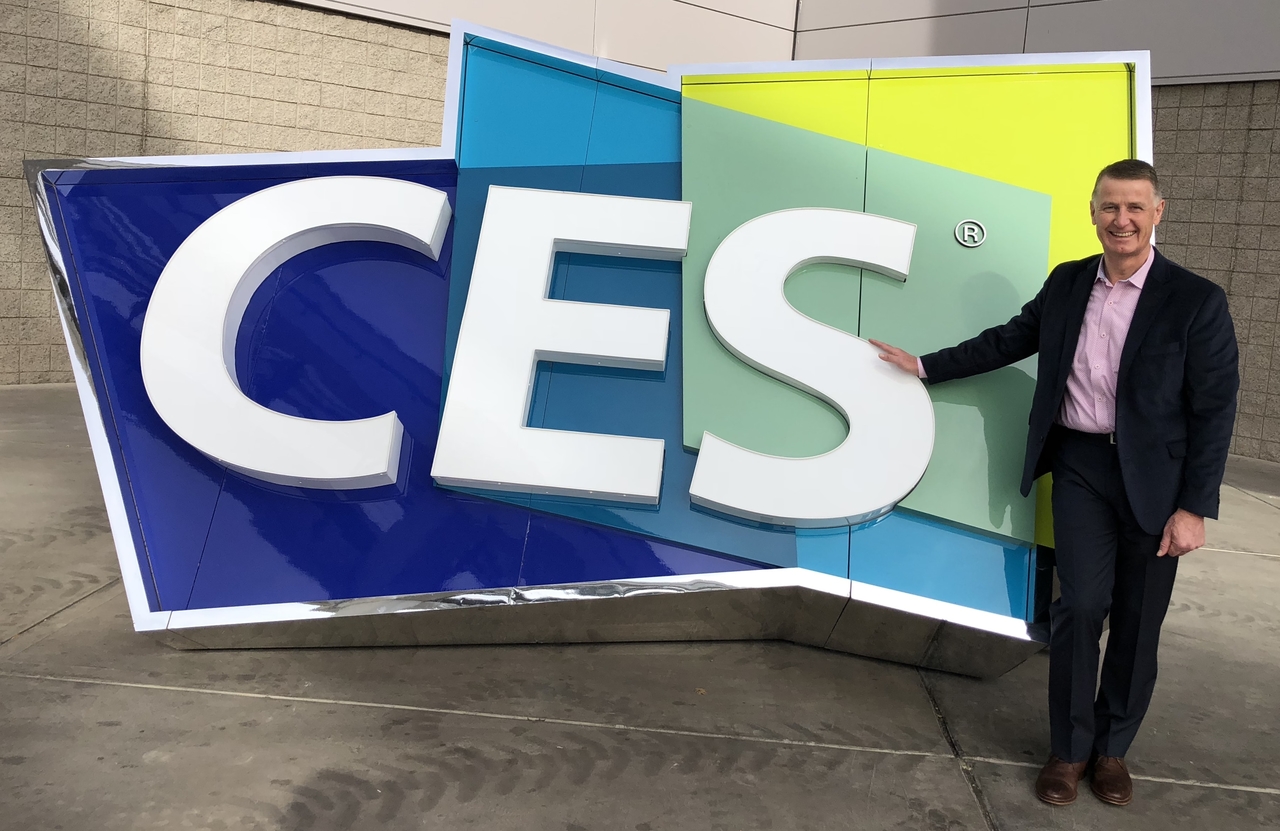Autonomous vehicles are a natural component of any smart city/smart transportation strategy. City traffic congestion is a well-known problem that can make or break the reputation of a city as being a liveable place. Any major initiative that makes moving the public from one point to another in the most efficient manner is good for everyone.
Singapore has always taken steps to improve public transport and provide a viable alternative to owning a vehicle. These initiatives are renowned worldwide, and Singapore’s public transport and road management held up as best practice globally. To enhance commuters experience Singapore has already introduced smart bus stops a year ago and in the future, we may see a complete ecosystem of smart bus stops.
Following a similar theme, a number of projects have been announced in the last few years to take public transport to the next level. Singapore is also embracing autonomous vehicles, with a number of initiatives launched over the last few years. Singapore’s Nanyang Technological University (NTU), and Volvo Buses in partnership with Singapore’s Land Transport Authority (LTA) have launched the world’s first full-size autonomous electric bus stretching 12 metres long with a capacity of around 80 passengers. As a part of public trials, the bus is being tested on fixed routes and services will subsequently extend to the public roads.
The buses are equipped with autonomous driving functionality and provide a quiet, emission-free operation and save up to 80% energy compared to an equivalent sized diesel bus. The bus has advanced features such as light detection and ranging sensors (LIDARS), 3D stereo-vision cameras, and an advanced GPS system that uses real-time kinematics which are connected to an inertial management unit (IMU) to measure the lateral and angular and help in navigation over varied terrains.
Real-world concerns for autonomous buses
The bus has undergone preliminary rounds of rigorous testing at the Centre of Excellence for Testing and Research of Autonomous vehicles at NTU (CETRAN). Confirming maximum safety and reliability, the AI system in the bus is protected with industry-leading cybersecurity measures. Speaking on the subject, Ecosystm’s Executive Analyst, Vernon Turner says that “While safety will always be the leading concern, software and hardware security and reliability will be the underpinning forces that make passengers comfortable with autonomous vehicles. The autonomous vehicle’s ecosystem is complex because the reliability of the vehicle is as much an IT and telecom function as it is an industrial manufacturing process.”What
What do Autonomous buses mean for the industry and how will it benefit the industry?
In most cities, public transportation is conducted in ‘restricted’ lanes (especially for buses), and therefore the routes are often consistent, and the operating environments can be continually monitored and matched for exceptions. The legislation for autonomous vehicles has to be carefully crafted to ensure the highest level of public safety while not stifling innovation.
“The digital impact of autonomous buses opens up a host of new services both for the transportation companies as well as the passengers. I wouldn’t be surprised to see transportation companies being sold public transportation vehicles such as buses as ‘buses as a service’ whereby the vehicles are managed in a 100% OPEX manner and have no CAPEX value! There will be a rich source of operational data from IoT-based sensors that the suppliers and the transportation companies will agree to pay for multiple usage metrics,” Says Turner. “Innovation will also appear in the transportation workflow – thus creating investment in real-time mapping, high-speed telecom networks, and in the case of an ‘EV’ or electric bus, the charging/recharging energy network. As the IT infrastructure is implemented, I would anticipate efficiencies in bus usage would increase with better route management. Passengers, buses and the routes become integrated into a better passenger and city life experience.”
To that end, the industry is excited to use public transportation for their autonomous vehicle programs.
Environmental Impact of autonomous buses
The government of various nations is spending enormous amounts on reducing emission and buses are inherently inefficient when it comes to diesel consumption, only getting between 1 to 4 kilometres/litre. “Switching them to electric vehicles while at the same time running them as autonomous vehicles in a very efficient manner could have a marked impact on the environment,” says Turner. “While the heavy workload for buses might quickly drain any EV batteries, having them work in a fully autonomous, dedicated bus lane should mitigate that energy cost. This could make it a feasible alternative to combustion engine vehicles while at the same time being highly friendly to the environment.”
My return to CES, the Consumer Electronic Show, was something that I had been looking forward to for some time. After all, it had been almost 4 years since I attended the last CES when the Internet of Things (IoT) was the latest solution looking for problems to be solved. As an industry analyst whose passion for IoT is well known, I was frustrated at the weak offerings, poor quality demos and wasted money at the booths. CES had halls and halls of IoT ‘stuff’ that made little or no sense to me, with almost no chance of these startups being around in 2019. But, that’s what these shows are meant to do.
Roll forward to 2019 and my mission was very specific. I was only interested in two major things – 5G and autonomous/self driving vehicles. I was determined not to get soaked up in the awesome glory of 8K televisions, and kitchens that would even scare off Chef Gordon Ramsey! 5G has been positioned as the natural platform for IoT innovation – fast, high capacity connectivity for applications such as autonomous vehicles, video and medical services. However, at this year’s CES, it seemed that the technology world and the trade press had finally gotten into the same room and realized (just like IoT) that 5G can mean many things. To that point, businesses were keen to call their new technology offerings that can be called 5G, 5G. I could see history repeating itself – hype and confusion this year, followed by disillusion and disappointment next year.
Let’s start with AT&T. When is 5G not 5G – when it is 5G E? AT&T insists on using the term 5G for its advanced 4G LTE network. I assume that if AT&T’s commercials say that 5G E is 5G then who are we to doubt them! In my humble opinion it is misleading and muddies the waters into convincing customers that they already have 5G. (By the way the ‘E’ stands for Evolution, or as one journalist put it “it’s a work in progress towards 5G’. Other global operators also made claims that they too were the first to market or the first to have a customer. However, 5G from a marketing aspect was a bust at this year’s CES. It was supposed to be a leading theme, but in reality it lacked reality. Perhaps selling to consumers is easier than selling to enterprise customers who know that 5G will require an upgrade of the entire network infrastructure, which in turn will take time.
Despite the marketing and messaging confusion, 5G is the underpinning technology of some very exciting technologies being shown at CES – in particular in the transportation industry. Here there was proof that progress has been made in the last 4 years. It was clear that core technologies such as mapping and location tracking have made it possible for the auto industry to think about services both inside the vehicle and outside it. Companies such as TomTom, Naver Labs and HERE showed the levels of progress that they have made in navigation, mobility services, and fleet management. Adjacent technologies for EV (Electric Vehicle) combined with advanced high quality mapping, make it possible to know better where to recharge and how to accurately navigate highways as efficiently as possible.
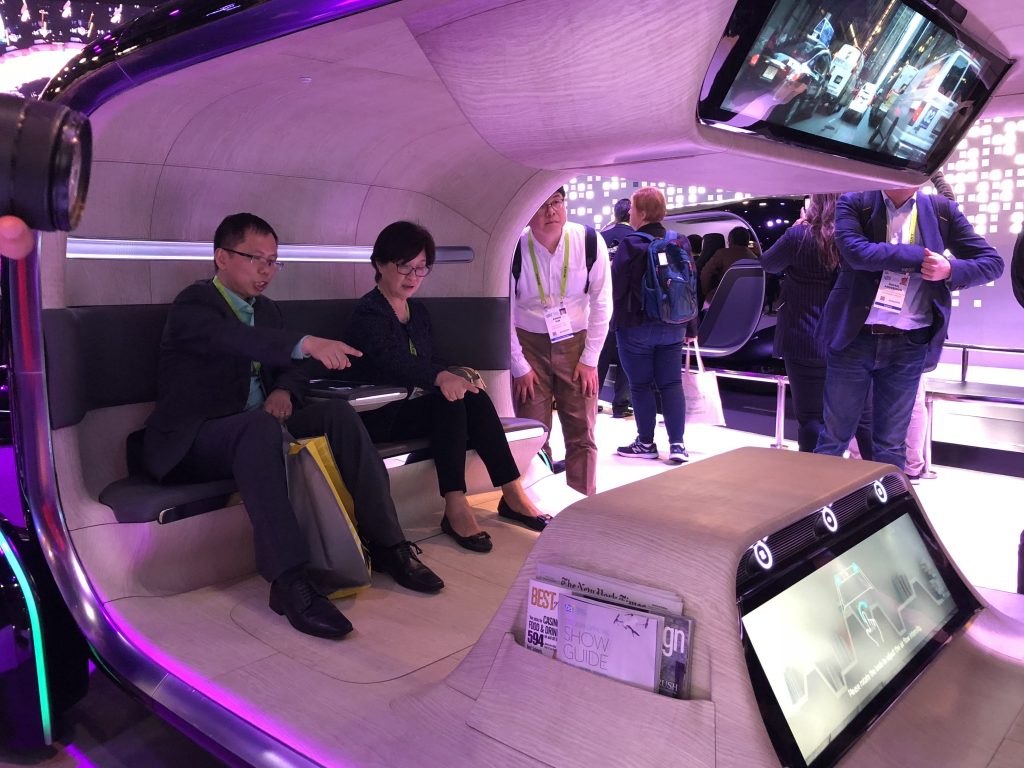
Innovation in this space takes on a new meaning when the vehicle isn’t a concept car, but rather a fully laden truck. At CES there was no shortage of trucking companies showing off their highly connected vehicles. For example, Paccar Inc., the parent of Peterbilt Motors Co. and Kenworth Truck Co. had an exhibit that featured a pair of battery-electric Peterbilt models and a hydrogen-electric truck from Kenworth and Toyota. Autonomous truck startup TuSimple also returned to CES, where it offered demonstrations of the sensors and machine vision behind its self-driving technology and announced plans to expand its US fleet to 40 trucks by June.
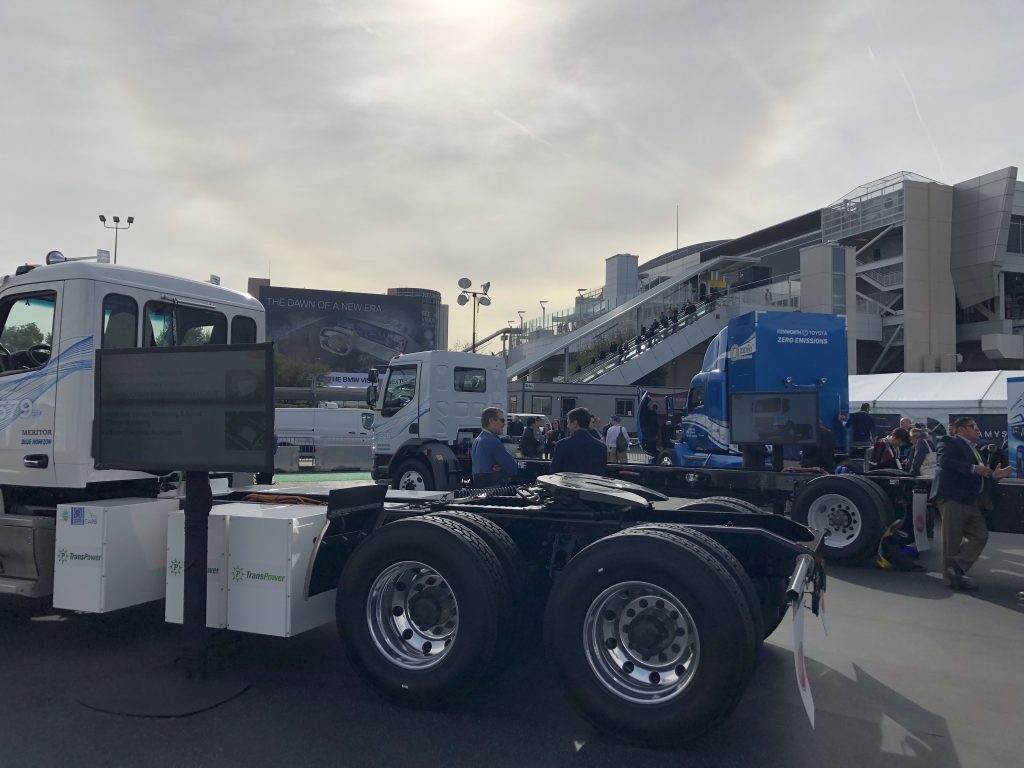 At CES, autonomous vehicle concepts from all of the global car brands were on display. Typically the German and Asian manufacturers showed a wide range of vehicles that continued to look like ‘travel pods’ or people movers rather than traditional automobiles, while US-based brands tended to focus on the infotainment services within the car. In summary, CES’s auto offerings showed that there is a very strong ecosystem of partners determined to change the way that we get from point A to point B in a safe and sustainable manner. In parallel, the ability to extend vehicle ride sharing across multiple modes of transportation including bicycles and helicopters (Bell’s Nexus product) is driven by high speed, real-time and accurate data fed from thousands of intelligent sensors.
At CES, autonomous vehicle concepts from all of the global car brands were on display. Typically the German and Asian manufacturers showed a wide range of vehicles that continued to look like ‘travel pods’ or people movers rather than traditional automobiles, while US-based brands tended to focus on the infotainment services within the car. In summary, CES’s auto offerings showed that there is a very strong ecosystem of partners determined to change the way that we get from point A to point B in a safe and sustainable manner. In parallel, the ability to extend vehicle ride sharing across multiple modes of transportation including bicycles and helicopters (Bell’s Nexus product) is driven by high speed, real-time and accurate data fed from thousands of intelligent sensors.
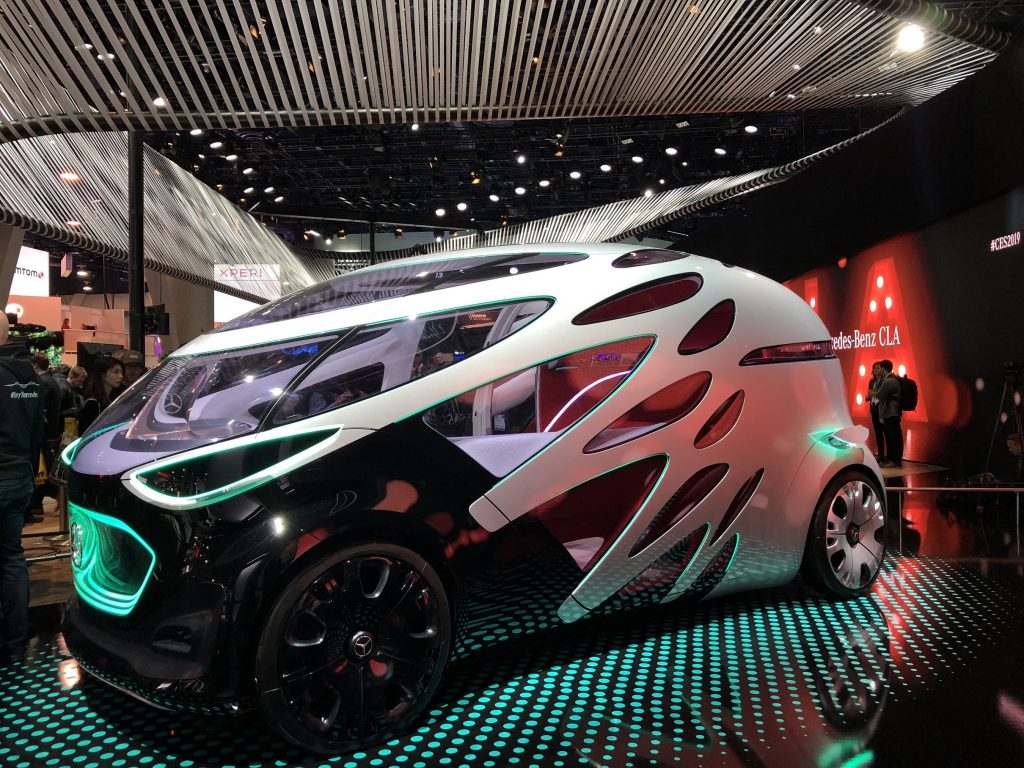
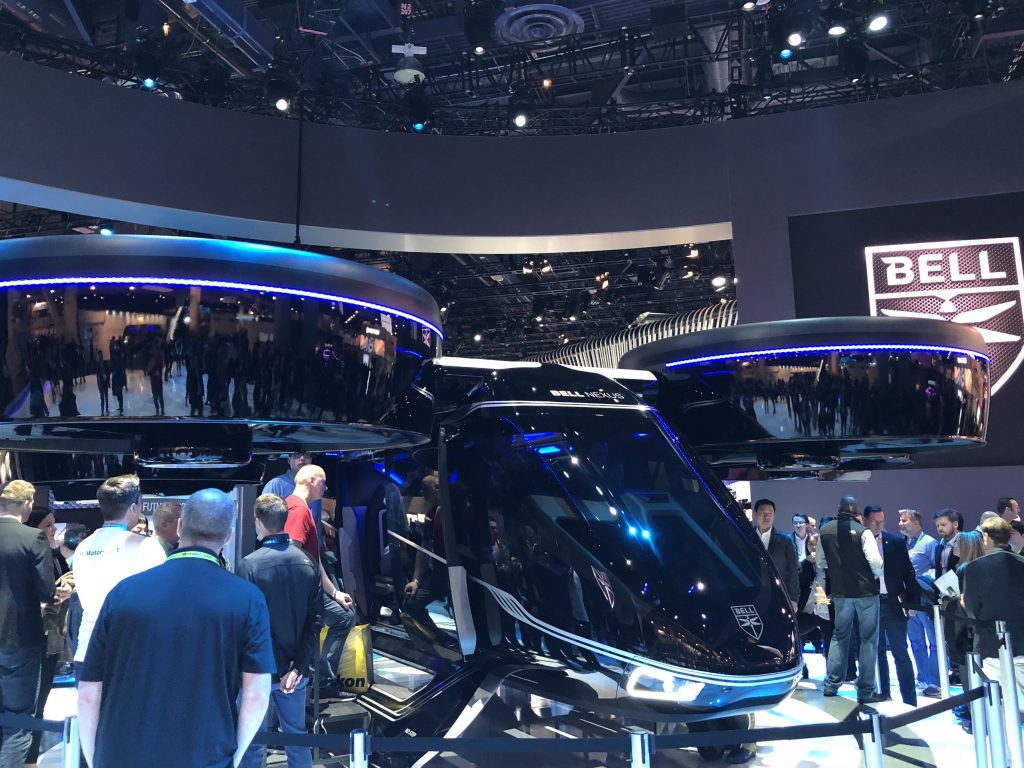
In conclusion, CES confirmed for me that despite the technical greatness of 5G, telecom operators continue to appear to be lost in their positioning of the product. Part of this may be stemming from the significant investment and consequently the risk of return on that investment. Part of it may be – like IoT – defining what 5G is really all about. Early IoT success stories have shown that it’s as much about positioning the business value around the data as it is about connectivity. Finally, CES showed me that while fully autonomous driving societies are several decades away, the strong industrial ecosystems that exist today are making significant progress towards that future.


